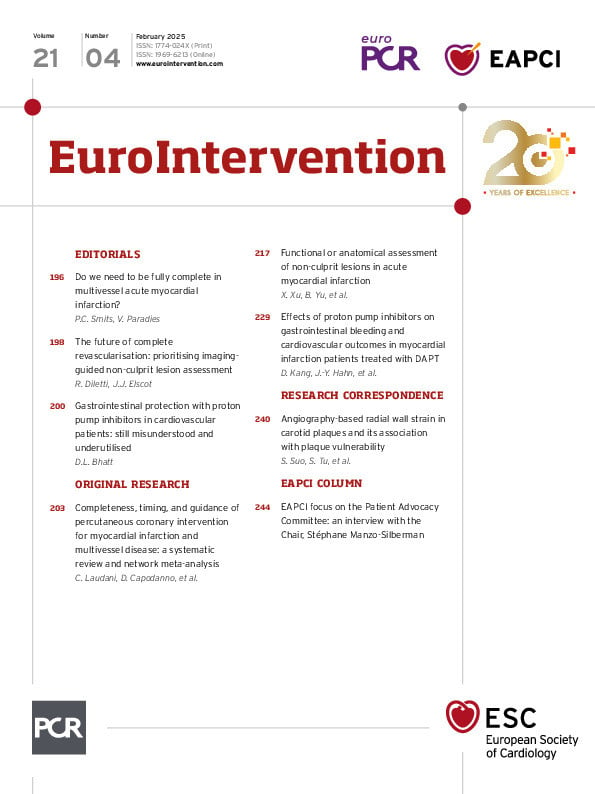Acute coronary syndrome (ACS) remains one of the leading causes of mortality and morbidity, accounting for a ~16% five-year mortality rate due to cardiac causes and a ~14.5% incidence of repeat non-fatal myocardial infarction1. In addition, disease burden due to cardiovascular disease including ACS is increasing because of population ageing in Western countries2. However, developments in the diagnosis and treatment of acute myocardial infarction have played a pivotal role in restraining the increasing cardiac disease burden3. One such development is the shifting paradigm towards complete coronary revascularisation of culprit and non-culprit lesions (NCLs) in patients with ST-segment elevation myocardial infarction, which is currently recommended in the 2023 European guidelines for the management of acute coronary syndromes4. Physiological interrogation of NCLs was confirmed to be a safe approach during the CompareAcute and DANAMI-3-PRIMULTI trials56 . However, the effectiveness of physiology-guided percutaneous coronary intervention (PCI) remains debatable when considering the presence of dynamic results in the setting of acute myocardial infarction78. In addition, NCLs with vulnerable plaque, observed with the use of optical coherence...
Sign up for free!
Join us for free and access thousands of articles from EuroIntervention, as well as presentations, videos, cases from PCRonline.com

